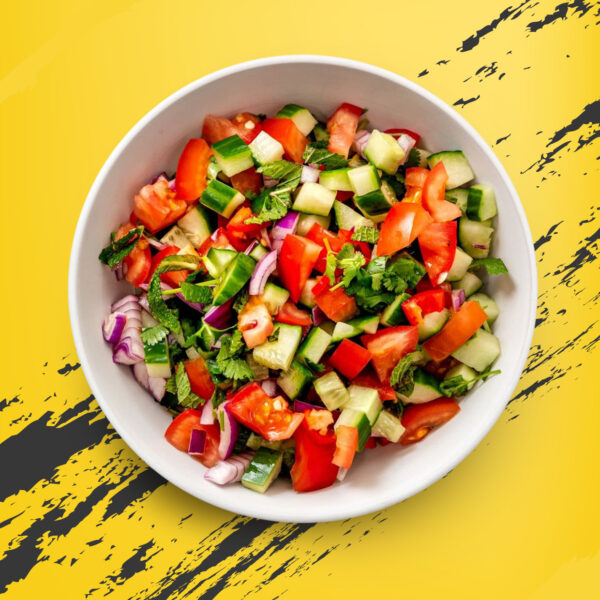Mindful eating is the practice of paying full attention to the experience of eating and drinking. It means being fully present—without judgment—as we engage with our food. We do not eat mindlessly or out of habit. Instead, we slow down, observe our body’s hunger signals, and respect what our body truly needs.
This practice involves using all our senses—taste, smell, texture, and sight—to enjoy every bite. Mindful eating is not about strict rules, restrictions, or guilt. It is about being conscious and intentional about what we eat, how we eat, and why we eat.
The Difference Between Mindful Eating and Dieting
Unlike traditional diets, mindful eating does not focus on calorie counting, portion control, or weight loss goals. It focuses on building a healthy relationship with food. While diets tell us what to eat, mindful eating teaches us to understand our hunger, satisfaction, and emotional triggers.
Where dieting often leads to cycles of restriction and bingeing, mindful eating promotes long-term balance, emotional peace, and sustainable habits.
The Benefits of Mindful Eating
1. Improved Digestion
When we eat slowly and chew our food thoroughly, we allow our digestive system to function properly. Eating in a calm state helps the body release the right enzymes and break down food efficiently. This can reduce bloating, indigestion, and gas.
2. Better Portion Control
Mindful eating helps us recognize when we are truly full. This prevents overeating and leads to more accurate portion sizes—without needing to weigh or measure food.
3. Healthier Food Choices
People who eat mindfully are more likely to choose nutrient-rich, wholesome foods. They become aware of how different foods make their bodies feel and naturally shift towards healthier meals.
4. Reduced Emotional Eating
Mindful eaters learn to distinguish between emotional hunger and physical hunger. Instead of turning to food for comfort, boredom, or stress, they explore healthier ways to deal with emotions.
5. Enhanced Enjoyment of Food
By focusing on the flavor, aroma, and texture of food, we begin to enjoy meals more. This leads to greater satisfaction with smaller amounts of food.
6. Sustainable Weight Management
Though not focused on weight loss, mindful eating often leads to gradual and sustainable weight balance. People eat less junk, binge less, and connect with their real hunger cues.
How to Practice Mindful Eating: A Step-by-Step Guide
Step 1: Pause Before You Eat
Before picking up your fork, take a moment. Observe your thoughts, feelings, and physical hunger level. Ask yourself:
- Am I physically hungry?
- Am I stressed, bored, or emotional?
- What does my body need right now?
Step 2: Observe Your Food
Look at your food. Notice its colors, shapes, and textures. Smell its aroma. Take a deep breath and give gratitude for the food and the effort behind it.
Step 3: Chew Slowly and Thoroughly
Put your utensils down between bites. Chew slowly. Notice the flavors. Let your mouth fully experience the food. Try to chew each bite 20–30 times if possible.
Step 4: Check In With Your Body Midway
Halfway through your meal, pause. Ask yourself:
- Am I still hungry?
- Am I eating just because the food is there?
- How is my body feeling right now?
Step 5: Stop When You’re Satisfied, Not Full
There’s a big difference between feeling satisfied and feeling full. When you feel gently satisfied (not stuffed), it’s okay to stop—even if there’s still food on the plate.
Common Challenges with Mindful Eating
1. Eating While Distracted
Many people eat while watching TV, scrolling their phone, or working. This disconnects them from the eating experience and leads to overeating. Creating a distraction-free environment is key to mindful eating.
2. Eating Too Fast
Fast eating is a habit that often comes from a rushed lifestyle. It takes time to retrain ourselves to slow down. Using smaller utensils or setting a timer can help.
3. Emotional Triggers
Food can be a comfort. Mindful eating helps us notice emotional patterns and redirect our energy. Journaling, deep breathing, or walking can help break this cycle.
4. Guilt and Shame Around Food
Letting go of guilt is essential. Mindful eating teaches us to treat all foods equally—without labeling them as “good” or “bad.” Every meal is a chance to listen, learn, and nourish.
Mindful Eating for Specific Groups
1. For Families
Teaching children to eat mindfully creates long-term healthy habits. Avoid using food as a reward or punishment. Instead, eat together, talk about flavors, and let kids decide when they’re full.
2. For People with Busy Schedules
Even 5 minutes of mindful eating can make a difference. Instead of eating on the go, pause during lunch breaks. Focus on quality over quantity.
3. For Emotional Eaters
Mindful eating offers tools to pause and reflect. Keeping a journal of hunger and emotions helps reveal patterns. Seeking professional support is also valuable.
4. For Health-Conscious Eaters
Mindful eating complements nutritional goals. It helps focus not only on what we eat, but also on how and why we eat.
Scientific Evidence Supporting Mindful Eating
- A 2014 review in Obesity Reviews found that mindful eating practices reduced binge eating and emotional eating significantly.
- A 2016 study published in Appetite showed that participants who practiced mindful eating were more likely to make healthier food choices over time.
- According to Harvard Health, slower, more attentive eating improves digestion and helps people enjoy food more deeply.
- Mindful eating has also been linked to lower body weight, improved cholesterol levels, and lower blood pressure in several studies.
Mindful Eating vs. Intuitive Eating
Though often confused, these are different practices:
| Feature | Mindful Eating | Intuitive Eating |
|---|---|---|
| Focus | Present-moment awareness while eating | Listening to internal hunger/fullness cues |
| Structure | Can be practiced during any eating style | Has 10 structured principles |
| Goal | Awareness and experience | Food freedom and body respect |
Both approaches can complement each other and lead to better relationships with food.
Mindful Eating Tips for Every Meal
Breakfast
- Start the day without screens.
- Enjoy the texture of fruit, eggs, or grains.
- Sip tea or coffee slowly.
Lunch
- Step away from your desk or phone.
- Focus on taste and chew fully.
- Pause midway and check satisfaction.
Dinner
- Light a candle or play soft music.
- Involve all senses—see, smell, touch.
- Give thanks for the meal.
How to Build a Daily Mindful Eating Habit
- Start with one meal per day: Choose breakfast or lunch to begin.
- Create a calm space: Remove clutter and distractions.
- Use smaller plates: They encourage slower, more conscious eating.
- Set a timer: Try eating for at least 20 minutes.
- Use all your senses: Turn meals into experiences, not tasks.
- Reflect after eating: How do you feel physically and emotionally?
Tools to Support Your Mindful Eating Practice
- Mindful Eating Journals: Track hunger, emotions, and energy levels.
- Apps: Try “Eat Right Now,” “Am I Hungry?” or “Mindful Eating Coach.”
- Books:
- Mindful Eating by Jan Chozen Bays
- Intuitive Eating by Evelyn Tribole and Elyse Resch
- Online Courses: Mindful Eating Institutes, Coursera, and Headspace offer guided sessions.
Final Thoughts on Mindful Eating
Mindful eating is not a trend. It’s a return to how we are meant to eat—with intention, appreciation, and presence. It teaches us that food is more than fuel. It is connection, culture, comfort, and healing.
By practicing mindful eating, we honor our bodies, our time, and our relationship with food. We learn to listen instead of restrict, to appreciate instead of overindulge, and to nourish instead of numb.
Every bite becomes a moment of self-care.
Beehive Restaurant and Lounge is a vibrant culinary destination in Portland, Oregon, offering a unique blend of authentic African cuisine infused with the sweetness of honey. Whether you’re joining us for a meal or a special celebration, Beehive is your hive of warmth, hospitality, and exceptional culinary delights. Connect with us on social media and join our community to stay updated on our latest offerings and events!








